Key in a search term below to search our website.
Key in a search term below to search our website.
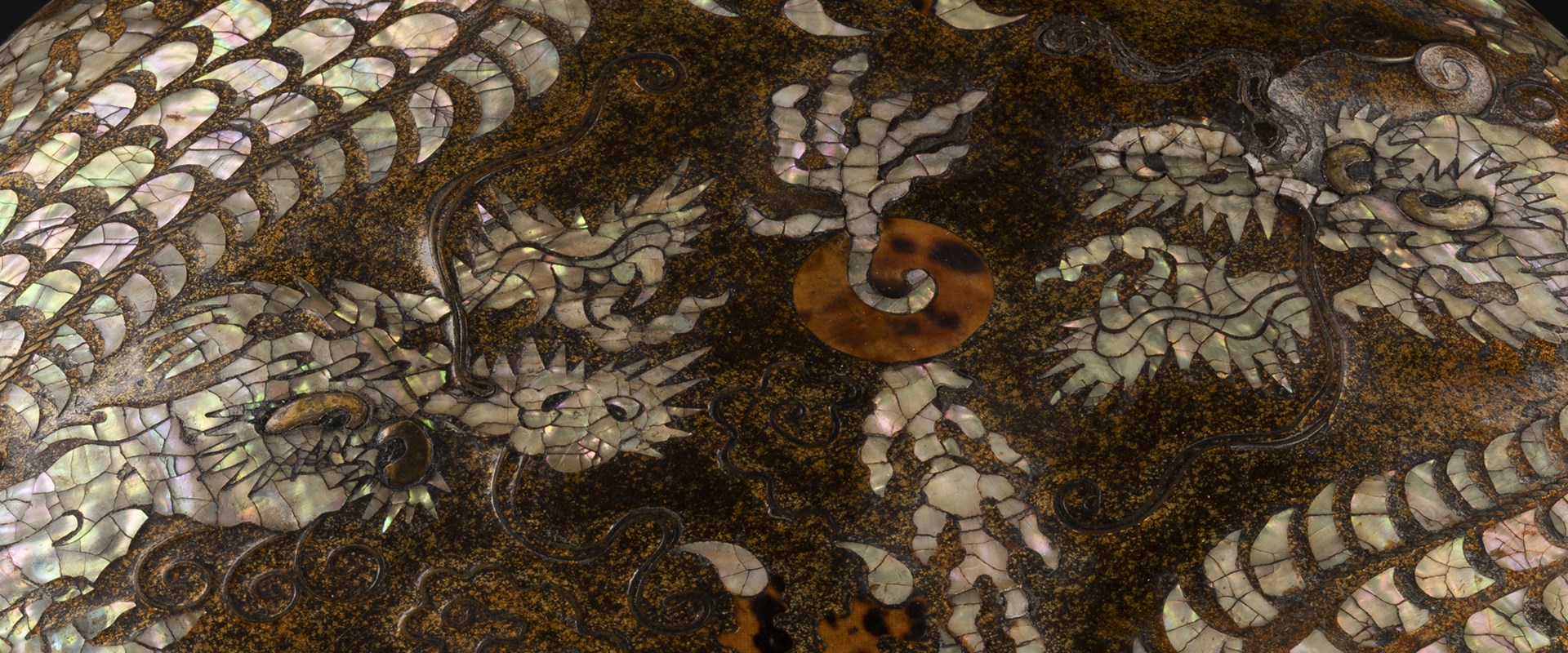
Two dragons wrap themselves around the exterior of this Korean lacquer box, their two heads meeting gracefully in the centre.
In East Asia, dragons symbolise strength and help to bring rain, because they are thought to live among the clouds.
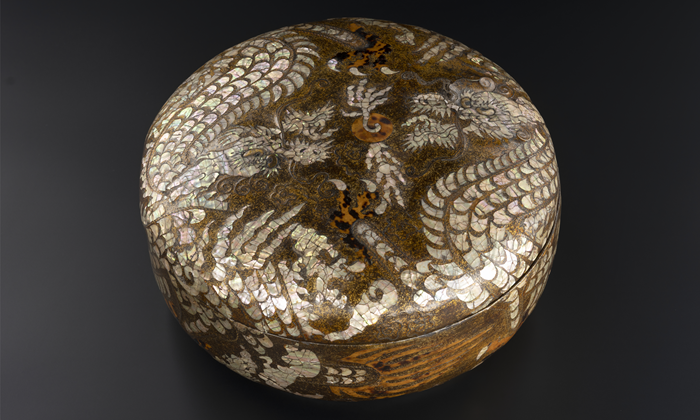
Circular lacquer box, black lacquered wood, Korea, Joseon dynasty, Early 20th century
The dragon decoration on this circular box was applied using the technique called najeonjang, where pieces of mother-of-pearl are inlaid into the black lacquer surface. The original appearance of this box may have been more black and silver, as opposed to the brown and gold appearance it has today.
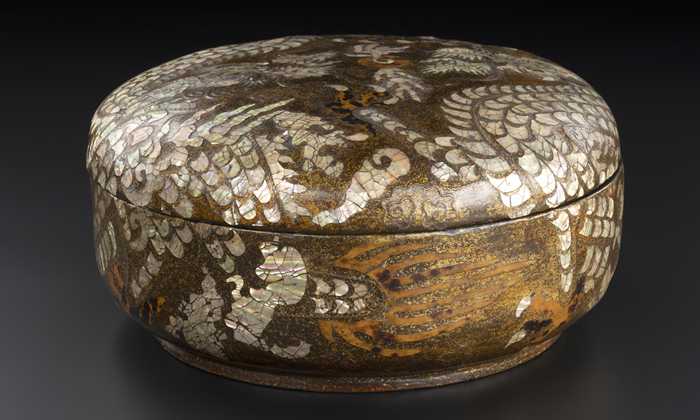
Circular lacquer box, black lacquered wood, Korea, Joseon dynasty, Early 20th century
Date
Early 20th century
Made from
Black lacquered wood, mother-of-pearl, tortoiseshell and metal wire
Made in
Korea
Museum reference
On display
Exploring East Asia, Level 5, National Museum of Scotland
Did you know?
Two phoenixes feature on the interior of this lacquer box.
Watch this film to see how this Korean lacquer box was carefully prepared for display in the Exploring East Asia gallery in the National Museum of Scotland.
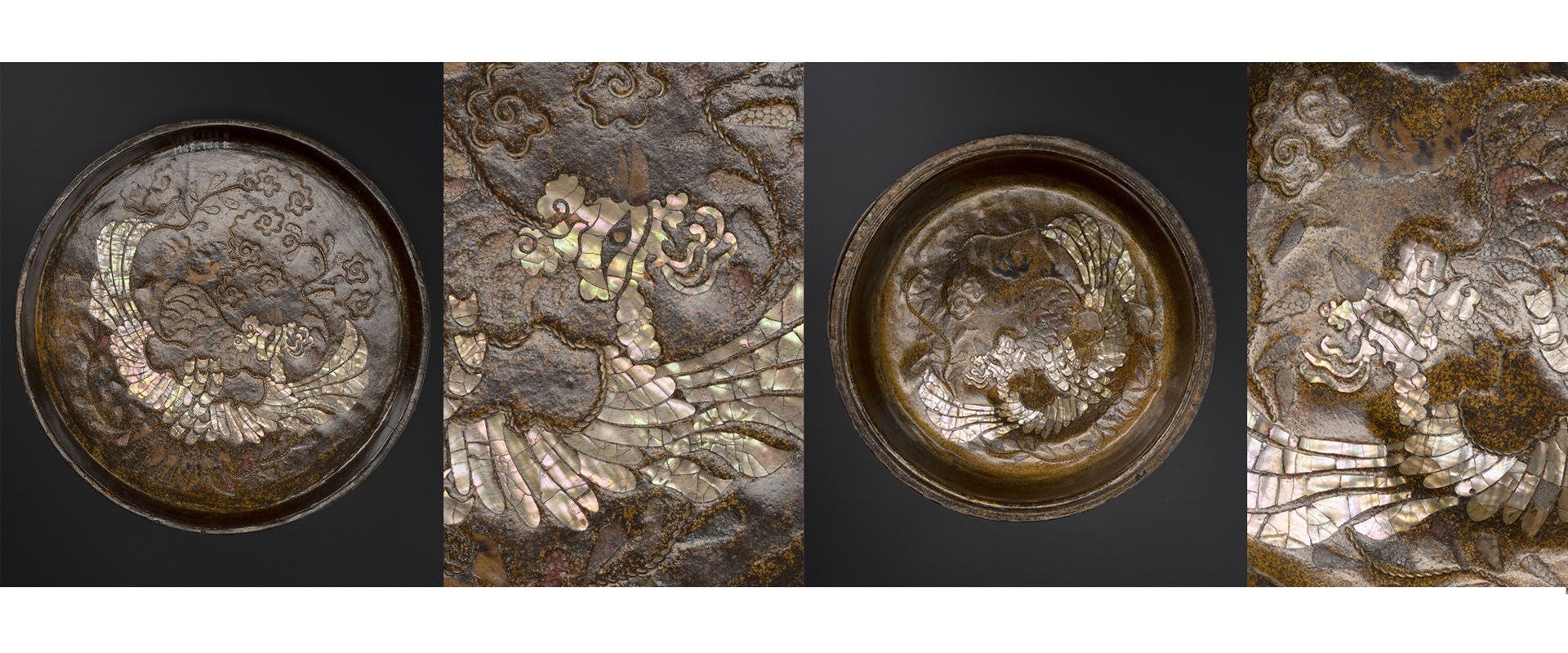
Two phoenixes feature on the interior of this lacquer box.
The technique of using lacquer developed in China more than 3000 years ago, and later spread east to Korea and Japan. Lacquer provided a glossy, decorative surface for furniture, musical instruments and household items.
Although inspiration was drawn from Chinese techniques, Korean artists also developed new approaches.
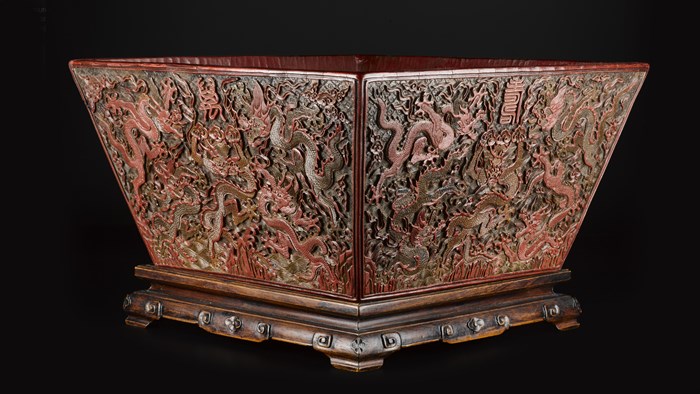
Rice measure decorated with dragons carved in red, green and brown lacquer, China, Ming Dynasty, Jiajing reign, 16th century.
Lacquer was an important craft in Korea, and the most popular lacquer decoration was characterised by a dark background and inlaid mother-of-pearl. The design elements were often floral or geometric.
High-quality, finely detailed objects reflected an individual's status and refinement in Korean society.
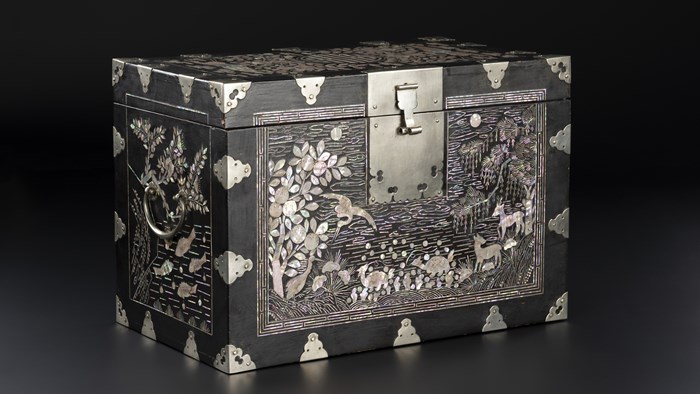
Lidded document-box, black lacquered wood inlaid with mother-of-pearl, Korea, Joseon dynasty, 19th century.
Lacquer is the sap of the tree -Toxicodendron vernicifluum, which grows across East Asia. The raw sap is collected, or ‘tapped’, by making cuts into the tree’s bark, in this state it is toxic and is a grey-brown colour.
The lacquer is refined to remove all impurities and stirred thoroughly to help bring out the lustre. Lacquer is then applied to a wooden core and many layers are applied to build up the surface.
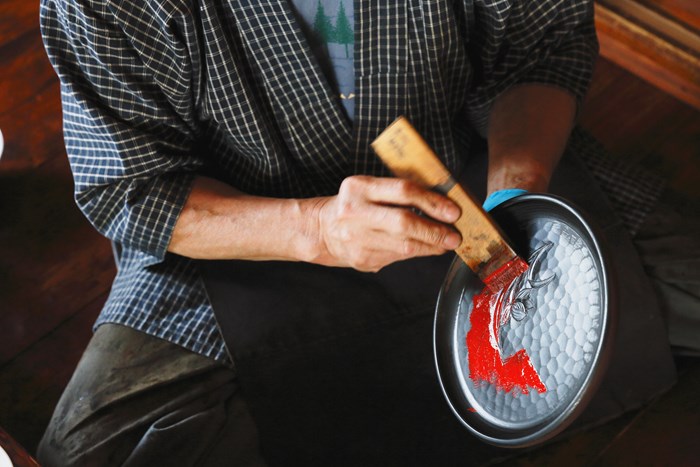
Japanese lacquer artisan working in the studio © Aflo / Alamy Stock Photo
With the najeonjang technique, the design would then be marked out on the sheets of mother-of-pearl and carefully cut out.
Watch this short video (right) to see how thin strips are used to create geometric designs. To create a completed design would require hundreds of careful, repeated actions.
The decorative technique of inlaying thin slivers of mother-of-pearl into lacquer continues today. This food box with nine compartments (gujeolpan) is by Sohn Dae-hyun.
Sohn Dae-hyun, officially recognised as a Master Craftsman, favours the scrolling motif for its balanced form. The number nine (gu) holds significance in traditional Korean thought, symbolizing myriad things, or the universe.
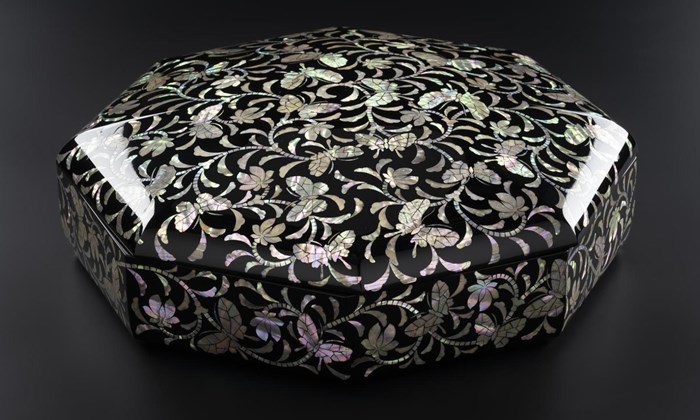
Food box with nine compartments (gujeolpan) by Sohn Dae-hyun, lacquered wood with mother-of-pearl, Seoul, Korea, 2001